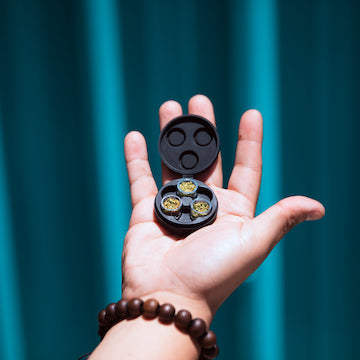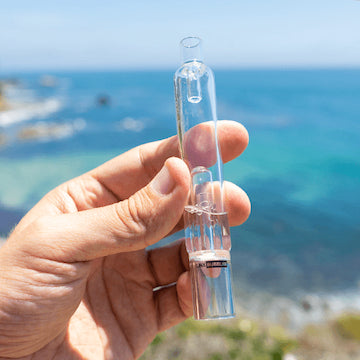Your Cart is Empty
FREE SHIPPING ON U.S. ORDERS OVER $60.
FREE SHIPPING ON U.S. ORDERS OVER $60.
FREE SHIPPING ON U.S. ORDERS OVER $60.
Shop Our Vaporizer Store
Browse through our vaporizer store for award winning portable vaporizers and dab pens. All of the Linx vaporizers are heavy metals tested and certified.
Don't forget to check out our full line of add-ons and accessories that tailor for your different vaping needs.
Get free shipping on US orders over $60.
Shop Our Vaporizer Store
Browse through our vaporizer store for award winning portable vaporizers and dab pens. All of the Linx vaporizers are heavy metals tested and certified.
Don't forget to check out our full line of add-ons and accessories that tailor for your different vaping needs.
Get free shipping on US orders over $60.
Shop Vape Accessories
Shop Vape Accessories
Shop Popular Add-ons
Shop Popular Add-ons
Shop Vape Accessories
Shop Vape Accessories
Shop Popular Add-ons

Eden Switch Dosing Capsule Set
Shop Popular Add-ons

Glass Bubbler

October 01, 2021 4 min read
The History of Cannabis: Part 4 - The Rise
Up until now, Cannabis has taken a beating. Racist agendas and competing interests worked in tandem to vilify Cannabis.
Unfortunately, this trend will continue well into the next century until the public opens its eyes to the benefits of Cannabis and begins to enact change on the state level. Its always darkest before the dawn.

1951 CE to Present
Mandatory Minimum Sentences and increased drug penalties were enacted after the passage of the Boggs Act in 1951.
Conviction for marijuana possession now carried a minimum sentence of 2 to 10 years and a fine of up to $20,000. In 1970 the National Organization for the Reform of Marijuana Laws (NORML) is formed.
Also in 1970, the Comprehensive Drug Abuse Prevention and Control Act categorized Cannabis as a schedule 1 narcotic having no accepted medical use and a high potential for abuse. Then in 1971 we get the first evidence suggesting that Cannabis can help with Glaucoma patients.
This is a large leap forward for Cannabis and should have prompted further investigation into Medicinal Cannabis, but as the Cannabis story goes, one step forward and two steps back.
In 1972, the Shafer Commission appointed by then President Richard Nixon recommend that the use of Cannabis be re-legalized, a recommendation that Nixon ignored. A quote from his former aide sheds light on his thinking at the time.
“We knew we couldn’t make it illegal to be either against the war or black, but by getting the public to associate hippies with marijuana and blacks with heroin, and then criminalizing both heavily, we could disrupt those communities. We could arrest their leaders, raid their homes, break up their meetings, and vilify them night after night on the evening news. Did we know we were lying about the drugs? Of course we did.” - John Ehrlichman, White House Domestic Affairs Adviser (1969 - 1973)

In 1977, famed Astrophysicist and Astronomer Carl Sagan proposes that Cannabis may very well have been the worlds first agricultural crop.
He suggests that Cannabis cultivation may have been the driving force behind civilization itself.
“It would be really interesting if in human history the cultivation of marijuana led generally to the invention of agriculture, and thereby to civilization.” - Carl Sagan
By 1981 then President Jimmy Carter pushed for the decriminalization of Cannabis.
He even went as far as to ask Congress to abolish federal criminal penalties for those caught carrying less than an ounce of Cannabis.
Not to be outdone, in 1986, then President Ronald Reagan reverses that sentiment by starting the “War on Drugs” and reinstating mandatory minimum sentences.

California, the first state to ban Cannabis use, reverses its position in 1996, re-legalizing medical Cannabis for patients suffering from cancer, AIDS and other serious conditions.
Arizona, Alaska, Colorado, Maine, Montana, Nevada, Oregon, Washington, Washington D.C., Hawaii, Maryland, New Mexico, Rhode Island, and Vermont soon follow suit.
Things finally began to look positive for Cannabis in the United States until 1997, when President Bill Clinton ignored the recommendations of the IOM (Institute of Medicine).
The IOM stated that Cannabis is a safe and effective medicine for patients suffering from certain illnesses.
Knowing this information, Clinton doubled down on the “War on Drugs” and actually began to arrest and prosecute medical Cannabis patients and their providers throughout California.
This “War on Drugs” was further intensified through the Presidency of George W. Bush from 2001 - 2008. It took the Presidency of Barack Obama to wind down this largely ineffective “War on Drugs”.
In 2009, the U.S. Justice Department, under the guidance of Obama, announces that federal prosecutors will no longer pursue Cannabis users and distributors that comply with state law.
This “War on Drugs” is still in effect today and its ramifications are far reaching and the costs are astronomical, totaling 1 trillion dollars.

In 2012, Colorado and Washington fully legalize Cannabis medicinally and for recreational use. This was a huge turning point for Cannabis patients and enthusiasts.
These states were the first to begin the experiment of legal Cannabis and they wouldn't be the last.
Throughout the turmoil, smear campaigns, competing interests, Presidential opinion and outrageous propaganda, Cannabis support has held strong. Public Opinion for Cannabis has shifted and the future finally looks bright for this miracle plant.
Last Fall California, Massachusetts, Main and Nevada joined Washington, Oregon, Alaska, Colorado, and Michigan in allowing for both medicinal and recreational use of Cannabis.
This is a clear signal that Cannabis is no longer viewed as the evil it once was. 16 additional U.S. states have upcoming initiatives to allow medicinal or recreational use.
But the fight isn’t over. Cannabis is still Federally illegal and will remain so until the D.E.A. (Drug Enforcement Agency) removes Cannabis from its current Schedule 1 listing and Congress removes Cannabis from its list of offensives warranting mandatory minimum sentences.
Additionally, the Trump White House and the head of the Department of Justice, Jefferson Beauregard Sessions, have signaled a return to the “War on Drugs”.
The fight for Cannabis legalization continues and its clear that we have a lot more work to do. Thanks for reading and continue to fight the powers that be.
Comments will be approved before showing up.